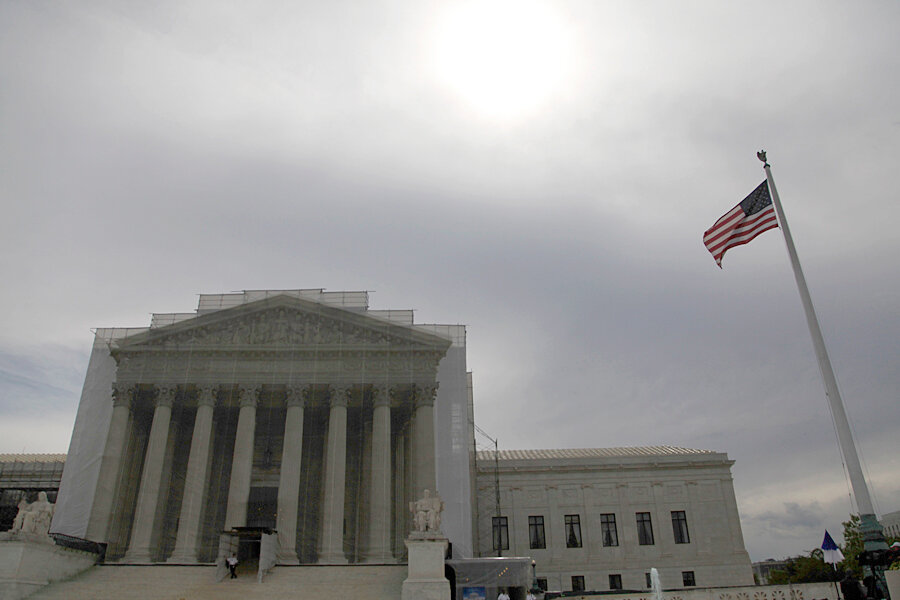Oklahoma abortion law that required ultrasound: Supreme Court turns away case
Loading...
| Washington
The US Supreme Court on Tuesday declined to take up a case examining the constitutionality of an Oklahoma law that required doctors to perform an ultrasound and verbally describe the condition of the fetus to the patient an hour before performing any abortion.
The court turned aside the appeal without comment.
The action lets stand a December ruling by the Oklahoma Supreme Court striking down the statute as an undue burden on a woman’s right to decide whether to have an abortion.
Oklahoma was one of four states to enact a law requiring that abortion providers conduct an ultrasound examination and explain to the patient the state of fetal development one hour prior to an abortion, even if the patient chose to avert her eyes from the screen.
Similar ultrasound-narration laws have been passed in Louisiana, Texas, and North Carolina.
Oklahoma’s law went one step further. In addition to the required narration, it mandated that the physician use a vaginally inserted transducer for the ultrasound – rather than the more common and less intrusive abdominal transducer – if the resulting image would “display the embryo or fetus more clearly.”
The requirements were imposed regardless of the wishes of the patient. Failure to comply by abortion providers was a state felony that could result in a range of punishments including the loss of a medical license.
The law was designed to ensure that women in Oklahoma were able to make an informed decision about whether to terminate their pregnancy. Critics of the measure viewed it as form of harassment – an attempt by antiabortion officials at the state level to impose onerous restrictions on abortions.
The Oklahoma Supreme Court struck down the law in a three-paragraph decision citing the US Supreme Court’s 1992 abortion precedent, Planned Parenthood v. Casey.
“The challenged measure is facially unconstitutional pursuant to Casey,” the court said. “The mandate of Casey remains binding on this Court until and unless the United States Supreme Court holds to the contrary. The judgment of the trial court holding the enactment unconstitutional is affirmed and the measure is stricken in its entirety.”
The action at the high court comes a week after the justices dismissed an appeal involving a different Oklahoma abortion law that sought to restrict the protocol and dosages used in chemically induced abortions in the state.
The Oklahoma Supreme Court also struck that law down.
In an unusual move, the US justices had asked the Oklahoma court to offer a more detailed version of its opinion striking down the chemical abortion restrictions. Once the court received Oklahoma’s more detailed opinion, it dismissed that case without comment.
In asking the high court to take up the Oklahoma fetal-development narration case, the Oklahoma Attorney General’s Office had said that ultrasound examinations are routinely performed prior to all abortions to determine the gestational age of the fetus.
“For many women actually seeing the ultrasound images has a necessary and critical impact in their decision-making process as to whether to terminate or continue their pregnancy to term,” wrote Special Assistant Attorney General Teresa Stanton Collett in her brief to the court.
A 2010 study of women intending to have an abortion showed that 66 percent changed their minds after viewing an ultrasound, she noted. The number of changed minds dropped to 43.5 percent for women who did not view an ultrasound.
“In the words of one 17-year-old who had planned to have an abortion, ‘While doing the ultrasound, I realized how real this baby already was. I saw the little arms and legs. I saw the heartbeat. It was a little person. At that point I knew I couldn’t have an abortion...,’ “ Ms. Collett wrote, quoting the teen.
The teen added: “I’m so glad I didn’t [have an abortion]. That would have been one thing I could never forgive myself for. Now I have two beautiful daughters.”
Stephanie Toti, a lawyer with the Center for Reproductive Rights, told the justices in her brief that the Oklahoma high court had ruled correctly and there was no need for further judicial review.
“This is no garden-variety ‘informed consent’ law,” Ms. Toti wrote in her brief. “It compels women to undergo an invasive medical examination and listen to a state-scripted narrative even if they object.”
“It is difficult to imagine a requirement more physically invasive than the state-mandated insertion of a medical device into one’s body even when the patient and the doctor think it unnecessary,” she said.
Nancy Northup, president of the Center for Reproductive Rights, said the Supreme Court’s action was “another victory for women and reproductive health care providers, and another clear message to lawmakers across the US that attacks on women’s health, rights, and dignity are patently unconstitutional and will not be allowed to stand.”
“A woman’s personal, private medical decisions should be made in consultation with the health care professionals she trusts, without interference by politicians who presume to know better,” Ms. Northup said in a statement.
The case was Pruitt v. Nova Health Systems (12-1170).





